Mammals
Introduction
Mammals are a diverse group of animals that belong to the class Mammalia. They are characterized by several key features, including the presence of mammary glands, hair or fur covering their bodies, and a unique bone in their ears called the stapes.
Key Characteristics
1. Mammary Glands: Mammals are named after their defining feature - mammary glands. These glands produce milk to nourish their young.
2. Hair or Fur: Most mammals have some form of hair or fur covering their bodies. This adaptation helps regulate body temperature and provides protection.
3. Warm-blooded: Mammals are warm-blooded, meaning they can regulate their internal body temperature, allowing them to thrive in a wide range of environments.
4. Viviparous reproduction: Most mammals give birth to live offspring, as opposed to laying eggs like reptiles or birds.
5. Specialized Teeth: Mammals have a variety of tooth types that are adapted to their specific diets, including incisors, canines, premolars, and molars.
6. Diaphragm: Mammals have a muscular diaphragm that aids in breathing by separating the chest cavity from the abdominal cavity.
Classification
Mammals are further classified into various groups, including monotremes, marsupials, and placental mammals.
1. Monotremes: This group includes egg-laying mammals, such as the platypus and echidna.
2. Marsupials: Marsupials give birth to relatively undeveloped young, which then continue to develop in a pouch. Examples include kangaroos, koalas, and opossums.
3. Placental Mammals: The largest group of mammals, placental mammals nourish their developing offspring through a placenta in the mother's uterus. This group includes humans, dogs, cats, whales, and many others.
Adaptations
Mammals have evolved a wide range of adaptations to thrive in different environments. These adaptations include specialized limbs for running, swimming, or flying, as well as unique sensory adaptations such as echolocation in bats and keen sense of smell in dogs.
Ecological Importance
Mammals play crucial roles in ecosystems as predators, prey, seed dispersers, and ecosystem engineers. They contribute to the balance and functioning of ecosystems worldwide.
Human Impact
Human activities such as habitat destruction, hunting, and climate change have significantly impacted mammal populations worldwide. Conservation efforts are essential to protect the diversity of mammals and their habitats.
.◂Biology Worksheets and Study Guides High School. Introduction to cells
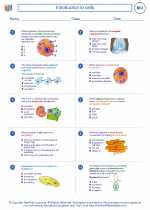
 Worksheet/Answer key
Worksheet/Answer key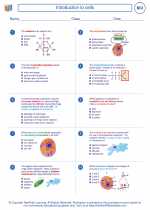
 Worksheet/Answer key
Worksheet/Answer key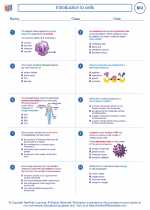
 Vocabulary/Answer key
Vocabulary/Answer key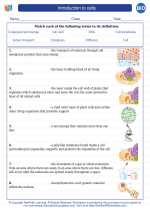
 Vocabulary/Answer key
Vocabulary/Answer key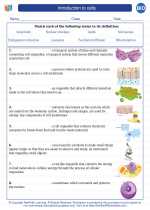
 Vocabulary/Answer key
Vocabulary/Answer key
 Vocabulary/Answer key
Vocabulary/Answer key
